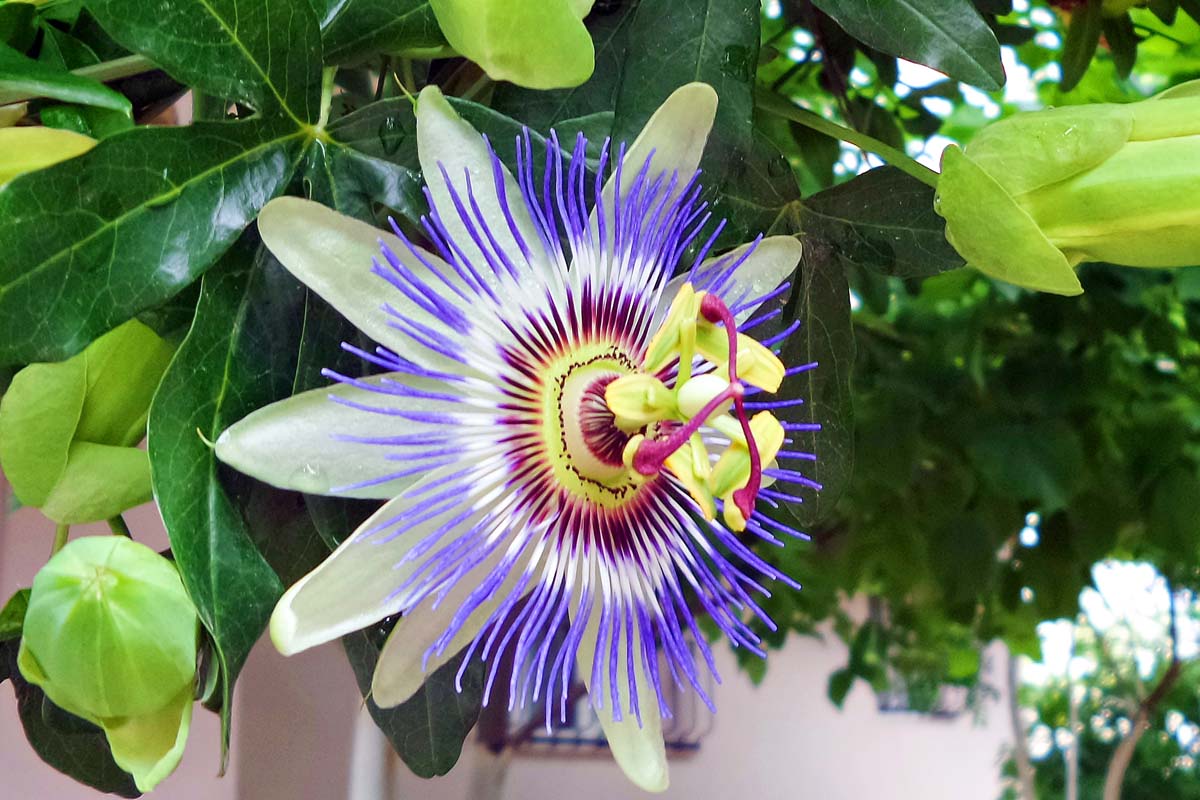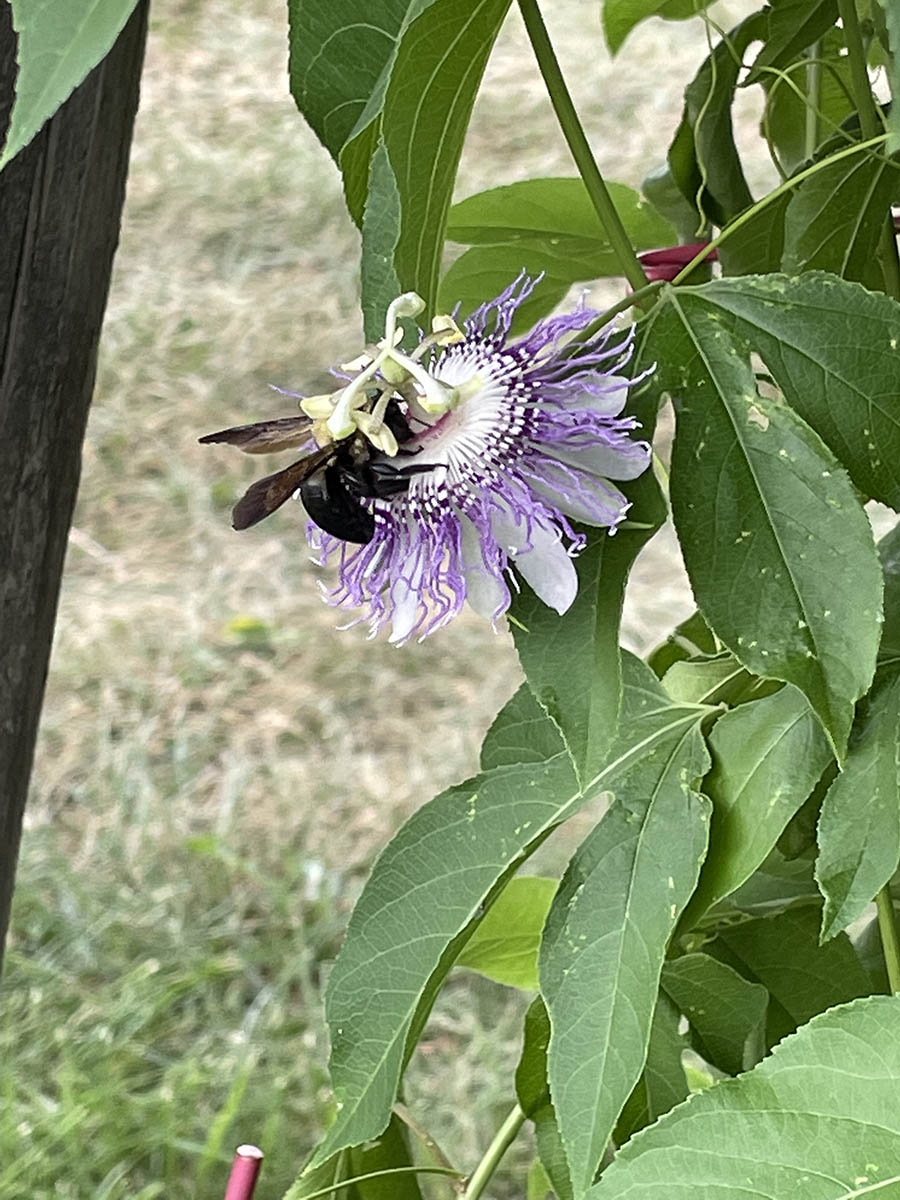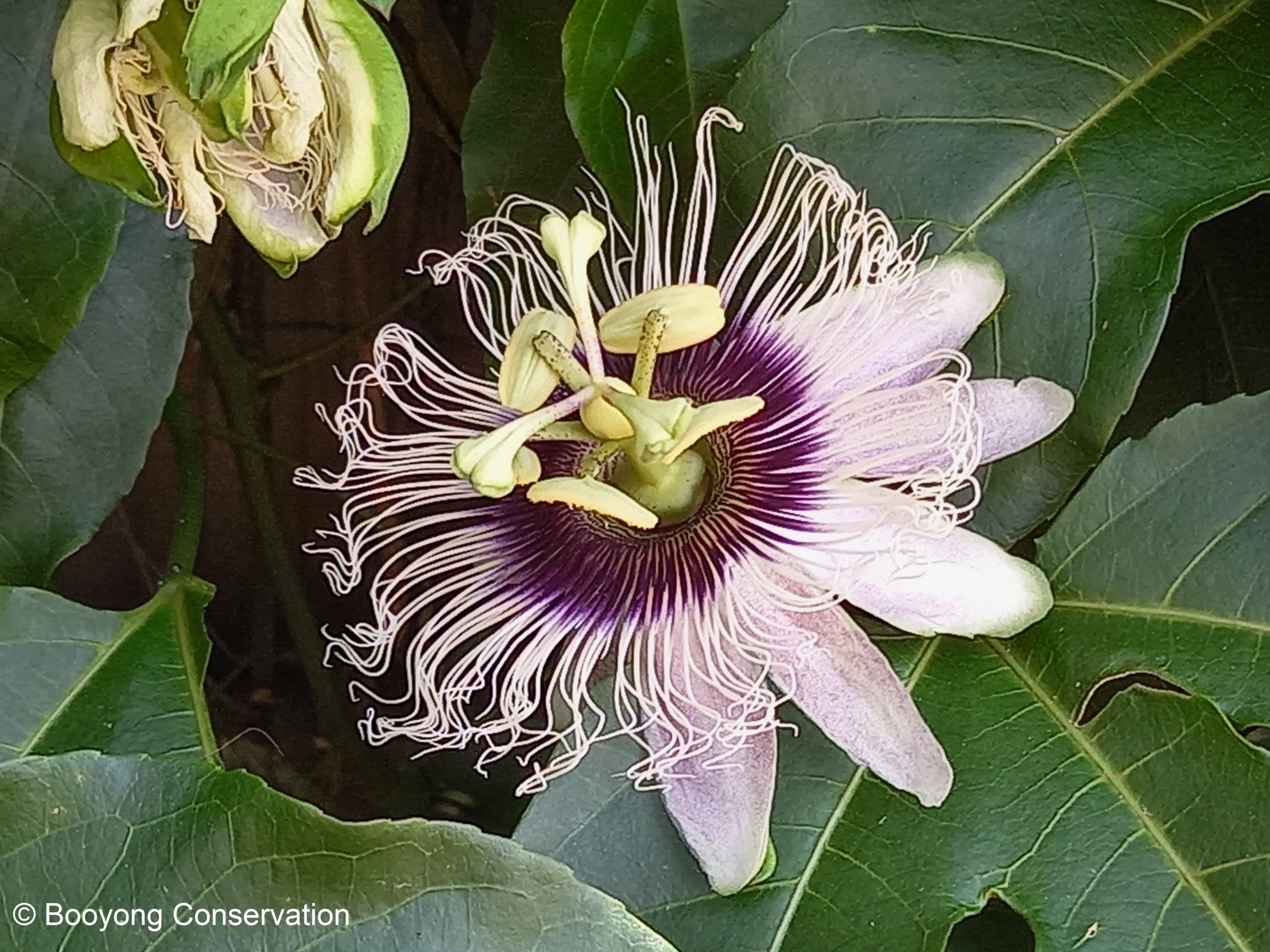Passionflowers are stunning vines that can add a tropical flair to your garden. However, they do require some specific care to thrive.
Light and Temperature
Passionflowers prefer full sun to partial shade. They thrive in warm temperatures, ideally between 65-85°F (18-30°C). In colder climates, they may need to be grown in containers and brought indoors during the winter months.
Watering
Keep the soil consistently moist but not soggy. Water deeply and allow the top inch of soil to dry out between waterings. During the hottest months, you may need to water more frequently.
Fertilizing
Fertilize your passionflower every 4-6 weeks during the growing season with a balanced liquid fertilizer diluted to half strength. Avoid over-fertilizing, as this can lead to excessive foliage growth at the expense of flowers.
Pruning

Pruning is essential for shaping your passionflower and encouraging blooming. Prune in late winter or early spring to remove dead or damaged branches. You can also prune to control the size and shape of the vine.
Blooming and Fruiting
Passionflowers produce stunning, intricate flowers that attract pollinators. To encourage blooming, ensure your plant receives adequate sunlight and water. After flowering, some species may produce edible fruit.
Growing Passionflowers
Passionflowers can be grown from seeds, cuttings, or purchased as young plants.
Growing from Seed
Start seeds indoors in sterile potting mix.
Growing from Cuttings

Take stem cuttings in spring or summer.
Planting
Plant your passionflower in well-draining soil in a location with adequate sunlight.
Companion Plants for Passionflowers
Passionflowers can be combined with other plants to create a beautiful and harmonious garden. Here are a few companion plant ideas:
Vines
Clematis
Shrubs

Butterfly bush
Herbs
Basil
By carefully selecting companion plants, you can create a stunning and diverse garden that will attract pollinators and provide a beautiful backdrop for your passionflower.
